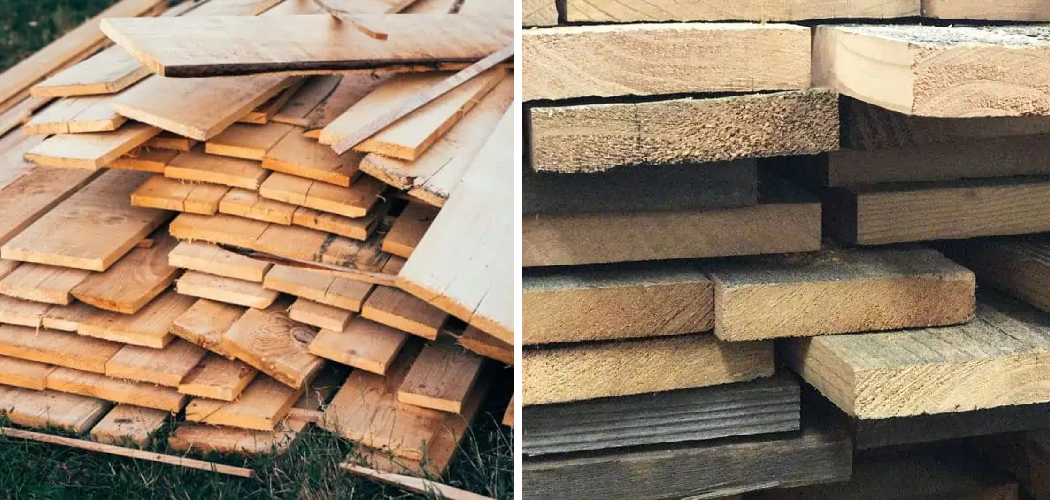Are you dealing with warped pressure treated lumber? Warped pressure treated lumber can be frustrating and difficult to work with, but it doesn’t need to be a lost cause.
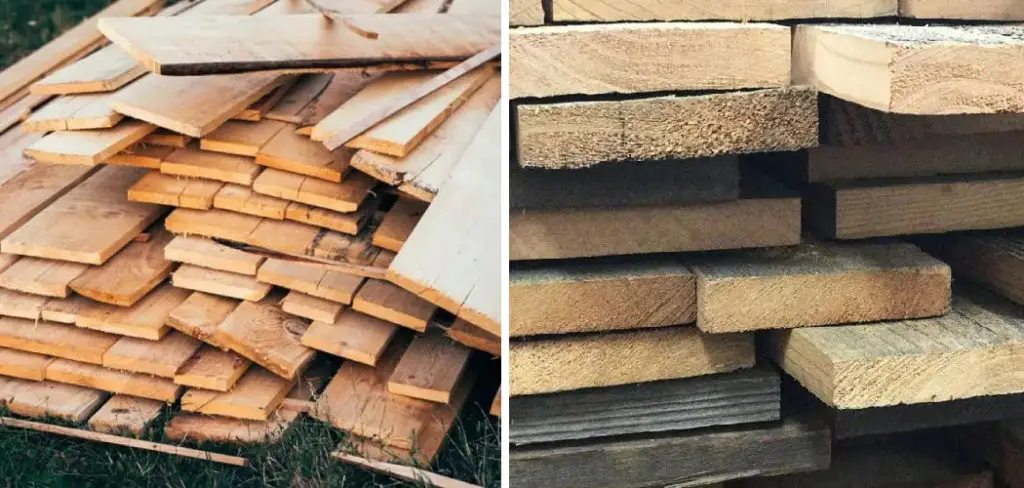
If you’re working on a DIY project or repair that requires pressure treated lumber, chances are that at some point in the process, you’ll have to deal with warp.
Whether it’s due to temperature fluctuations while being stored outdoors or moisture catching up during an extended period of use, warped wood can really throw a wrench into your plans. Fortunately, there is hope! With the right approach and tools, it’s possible to straighten out warped pressure-treated lumber and get your projects back on track.
In this blog post, we’ll provide step-by-step instructions for how to do exactly that – so keep reading if you’d like to learn how to straighten warped pressure treated lumber yourself!
What Are the Causes of Warp in Pressure Treated Lumber?
Before moving on to the tips and tricks of straightening warped pressure treated lumber, it’s important to understand why it warps in the first place.
There are several possible reasons for warp in pressure-treated lumber, including:
1. Temperature Fluctuations: When exposed to extreme temperatures, especially during storage, pressure treated lumber can expand or contract, causing the wood to warp.
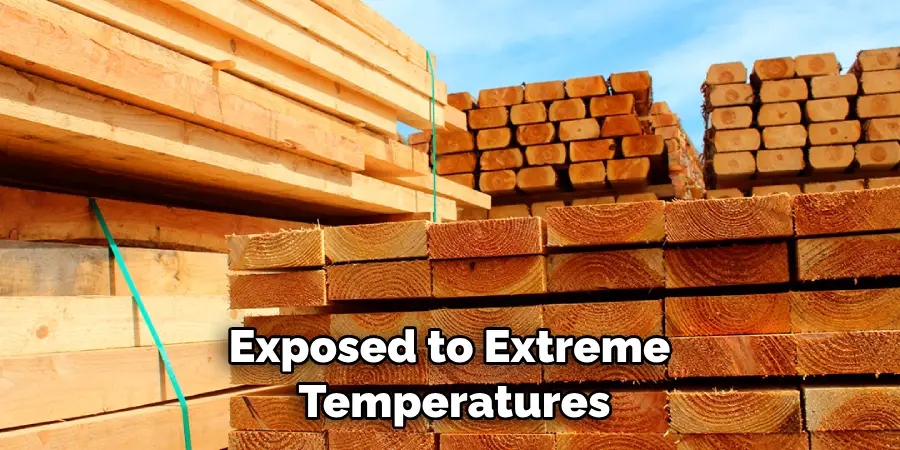
2. Moisture Capture: If stored in a damp environment for an extended period, moisture can become trapped inside the wood fibers and cause warping.
3. Impact Damage: Pressure-treated lumber is more susceptible to impact damage than other types of wood, which can cause warping over time if not properly taken care of.
Now that you have a better understanding of what causes warp in pressure treated lumber, let’s move on to how you can fix it!
What Will You Need?
Once you know what caused the warp in your pressure treated lumber, it’s time to start fixing it. Before beginning the process, ensure you have all the necessary tools and materials at hand – this will make the job much smoother.
The following items are needed for straightening warped pressure treated lumber:
- Hammer
- Straight edge (ruler or level)
- Sandpaper
- Wood clamps (optional)
- Heat source (optional)
Once you have the above items, then you are ready to start straightening your warped pressure treated lumber!
10 Easy Steps on How to Straighten Warped Pressure Treated Lumber
Now that you’ve gathered the necessary tools and materials, you’re ready to start straightening your warped pressure treated lumber. Here’s what to do:
Step 1. Use a Hammer:
Start by using a hammer and straight edge to lightly tap the board to flatten any bends or bows that may have occurred due to moisture capture or temperature fluctuations. You can also use the hammer to tap down any warps that may have been caused by impact damage. If using a heat source, you can use it to heat up the board before hammering.
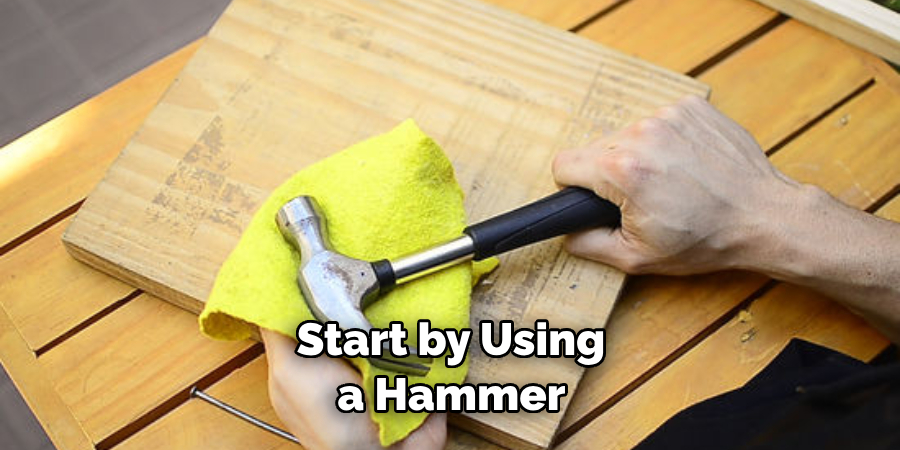
Step 2. Sand:
Once you are satisfied with the board’s shape, use sandpaper to smooth out any rough patches or splinters that may have been created by hammering. This will help the board look more presentable and make it easier to work with. As mentioned above, if using a heat source, you can use it to heat up the board before sanding.
Step 3. Clamp (optional):
If you wish to keep your board in a certain shape while working on it, consider using some clamps to secure it in place. This can be helpful if you plan on making future adjustments or need extra project support. Remember to remove the clamps once you’re done!
Step 4. Heat (optional):
If the warp is particularly stubborn, try applying heat to the affected areas before straightening them. This can loosen up the fibers of the wood and make it easier to manipulate into a desired shape. However, be careful not to overheat your board, as this could cause further damage.
Step 5. Apply Pressure:
Once you have finished heating the board, apply pressure to the warped sections in order to flatten them out. This can be done with your hands or with a tool such as a rubber mallet. Be careful not to apply too much pressure, as this can cause further damage.
Step 6. Check for Warping:
Once you have applied pressure to the board, take a step back and check for any areas that are still warped. If there are any, repeat steps 1 through 5 until they are all flattened out. As with all of the steps, be sure not to apply too much pressure, as this can cause further damage.
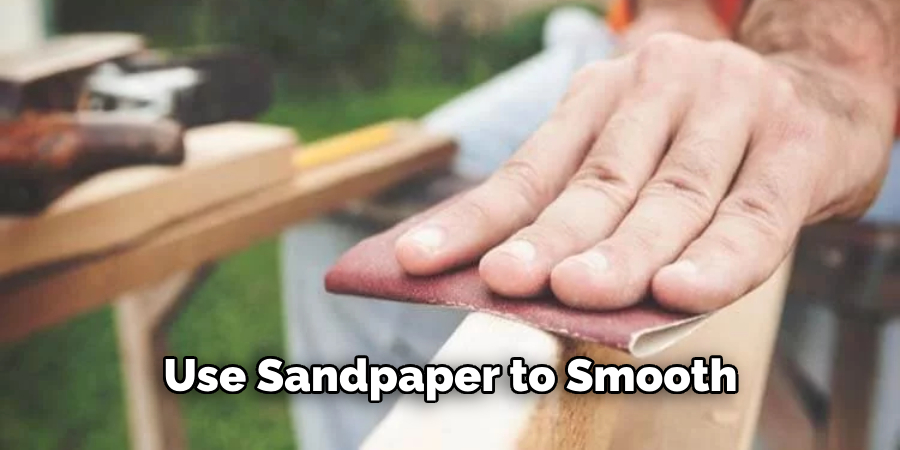
Step 7. Sand Again:
After making sure that your board is completely flat, use sandpaper to smooth out any rough patches or splinters created by hammering and pressing. This will help make the lumber look presentable and make it easier to work with. It will also help protect the wood from further damage due to moisture capture or temperature fluctuations.
Step 8. Apply Finish (optional):
If you plan on using the straightened lumber for an outdoor project, consider applying a finish such as a waterproof sealant or paint in order to protect it from further damage caused by the elements. Keep in mind that this step is optional, so it’s up to you whether or not you choose to do it.
Step 9. Let It Dry:
Allow your board to dry completely before using it for any projects – this will help ensure that the lumber stays straight and does not warp over time. Use a fan or dehumidifier to help speed up the process. It will also help keep the lumber in a dust-free environment while drying.
Step 10. Enjoy Your Straightened Lumber!
You’ve done it – your warped pressure treated lumber is now straightened out and ready for use in whatever project you have in mind! Congratulations, and enjoy! Remember to be safe when using your newly straightened lumber, and always wear protective gear such as gloves and safety goggles.
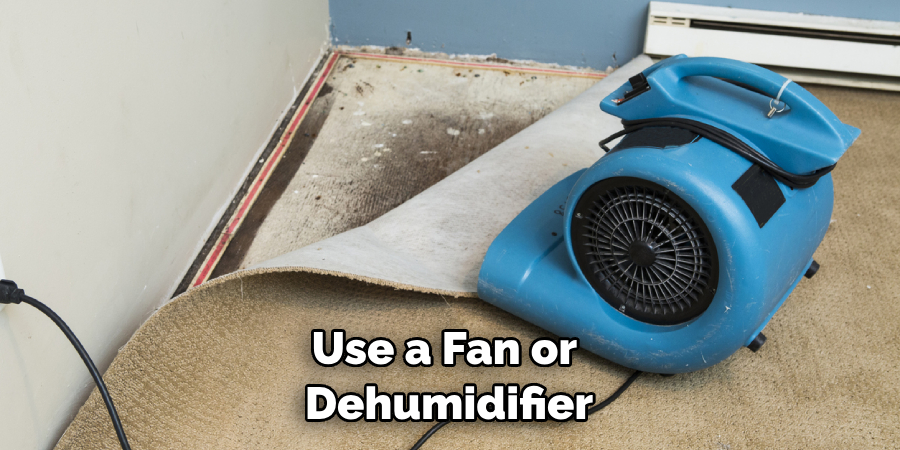
By following these easy steps, you can successfully straighten warped pressure treated lumber with minimal effort. Now that you know how to fix your boards, go out and make something awesome!
5 Additional Tips and Tricks:
1. To straighten warped pressure treated lumber, use a metal bar and hammer to tap along the length of the board. This will help break apart any knots that have caused the board to warp.
2. Make sure to use a rubber mallet instead of a metal hammer when tapping along the length of the board, as it will not cause any extra damage to the wood.
3. Place two pieces of pressure treated lumber on either side of the warped piece and clamp them together tightly with clamps. This will help hold the board in place while you work on straightening it out.
4. Use a belt sander or power planer to remove any uneven spots or knots from the warped piece of pressure treated lumber and to ensure smooth surfaces after straightening is complete.
5. Once you’ve finished straightening your warped piece of pressure treated lumber, seal it with a weatherproof sealant to protect the wood from further damage. Doing this will help preserve your lumber’s lifespan and ensure it continues to look good for years to come.
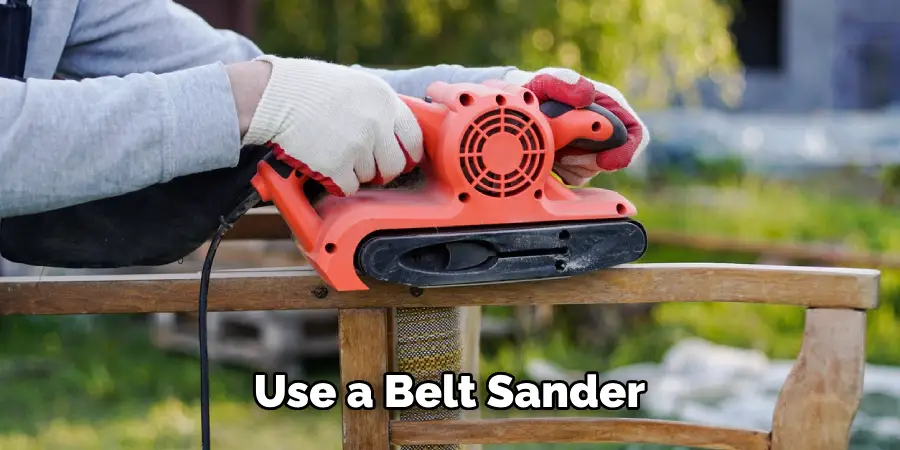
These tips and techniques can be used as a guide when attempting to straighten warped pressure treated lumber, providing you with a successful result. With these methods, you’ll be able to transform any warped boards into usable pieces of lumber that are ready for use in whatever project you have in mind.
5 Things You Should Avoid
- Avoid using a nail gun when straightening pressure treated lumber, as nails may not hold the board properly in place.
- Do not use too much force or excessive hammering when tapping along the length of the board, as this may cause extra damage to it.
- Never use regular wood screws on pressure treated lumber; instead, opt for stainless-steel screws that are designed specifically for outdoor use and won’t rust or corrode over time.
- Don’t try and straighten warped pieces of pressure treated lumber with your hands, as you risk breaking it if you apply too much force or pull in the wrong direction.
- Lastly, never leave any exposed areas of pressure treated lumber without sealing them, as moisture can cause further warping or damage to the wood.
By following these tips and tricks, you can ensure that your pressure treated lumber remains straight and in perfect condition for years to come. With the proper techniques and tools, it’s easy to transform warped boards into usable pieces of lumber that are ready for any project!
Does Oiling Wood Prevent Warping?
Yes, oiling wood can help prevent warping. When applied to the surface of the wood, a protective coating is formed that helps lock moisture out and keeps the wood in its original shape. This coating also prevents exposure to extreme temperatures and other environmental conditions that can cause warping over time. Oiling should be done regularly on pressure treated lumber to ensure it remains warp-free.
Additionally, consider applying a weatherproof sealant after oiling for extra protection from water damage and decay. With regular maintenance, your wooden structures will remain straight and strong for years to come!
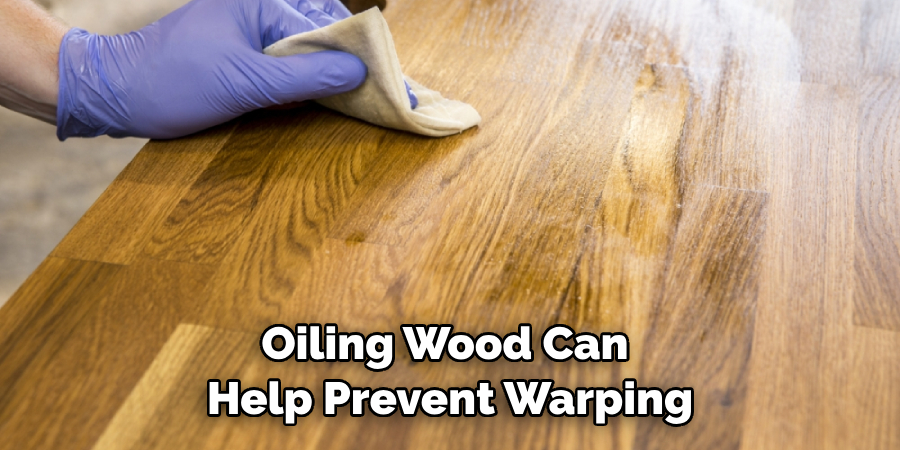
Should You Waterproof Pressure Treated Wood?
Waterproofing pressure-treated lumber is an important step in the maintenance process and should be done regularly. Applying a weatherproof sealant to your wood creates a barrier that helps keep moisture out and protects it from rot and decay. Additionally, this coating will help prevent warping or other forms of damage caused by extreme temperatures or environmental conditions.
When choosing a waterproof sealant for pressure-treated wood, make sure it is specifically designed for outdoor use and won’t deteriorate over time. With regular sealing and maintenance, your wooden structures will stay sturdy for years to come!
Waterproofing your pressure treated wood can help ensure that it stays in good condition for longer and withstands the elements. It’s an important step to take if you want your wooden structures to remain strong, stable, and attractive for years to come.
What Kind of Sealer to Use on Pressure Treated Wood?
The best kind of sealer to use on pressure treated wood is one that is specifically designed for outdoor use. Look for a weatherproof sealant or a UV-resistant coating, as these will provide the most protection from moisture and other types of damage caused by the elements. Additionally, make sure that your sealant won’t deteriorate over time and will remain effective for many years.
When applying the sealant to your pressure treated wood, be sure to cover all exposed areas, including cut ends and corners. This will help ensure complete coverage and maximum protection against rot and decay. With this extra layer of protection, you can rest assured that your wooden structures are safe from the elements!
Conclusion
In conclusion, warping can be a big problem when it comes to using pressure treated lumber, however, you don’t need to worry! With the simple steps outlined above, you will have no trouble straightening out those warped boards before you install them.
Remember that once completed, ensure your supports and fastenings are checked regularly to avoid warping down the track. It may take some time, but with patience and dedication, your outdoor space will feel like new with pressure treated lumber with a beautiful finish to boot.
The outdoor entertaining area will be the envy of all your family and friends as they comment on your hard work and dedication. So don’t let warping ruin your outdoors – use the tips mentioned above, and it’ll look perfect in no time!
Hopefully, the article on how to straighten warped pressure treated lumber has given you the confidence to tackle any warped piece of lumber with ease. With the right tools and techniques, you can transform any board into usable pieces ready for your project. Just remember to seal them up afterward! Good luck, and have fun!

